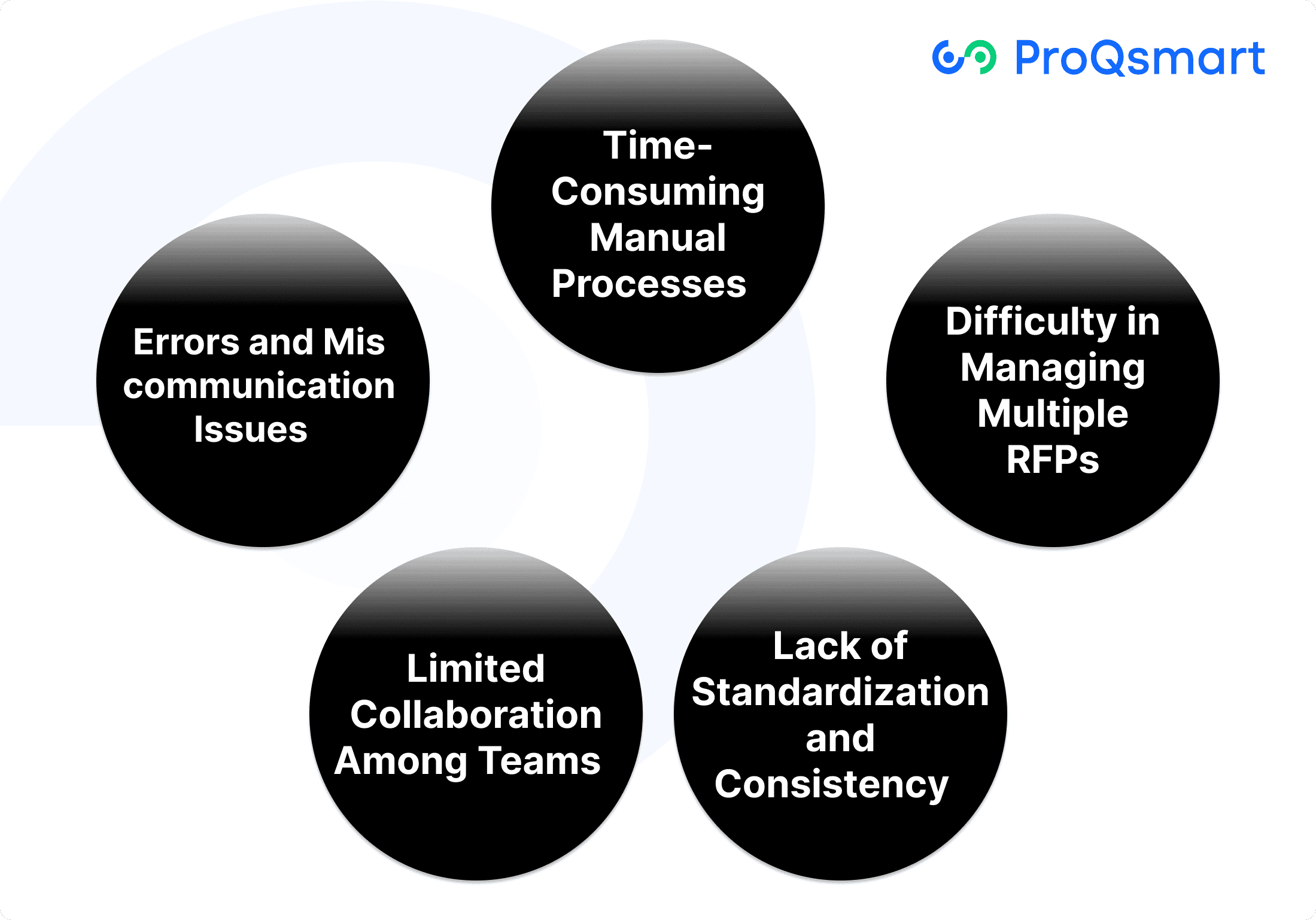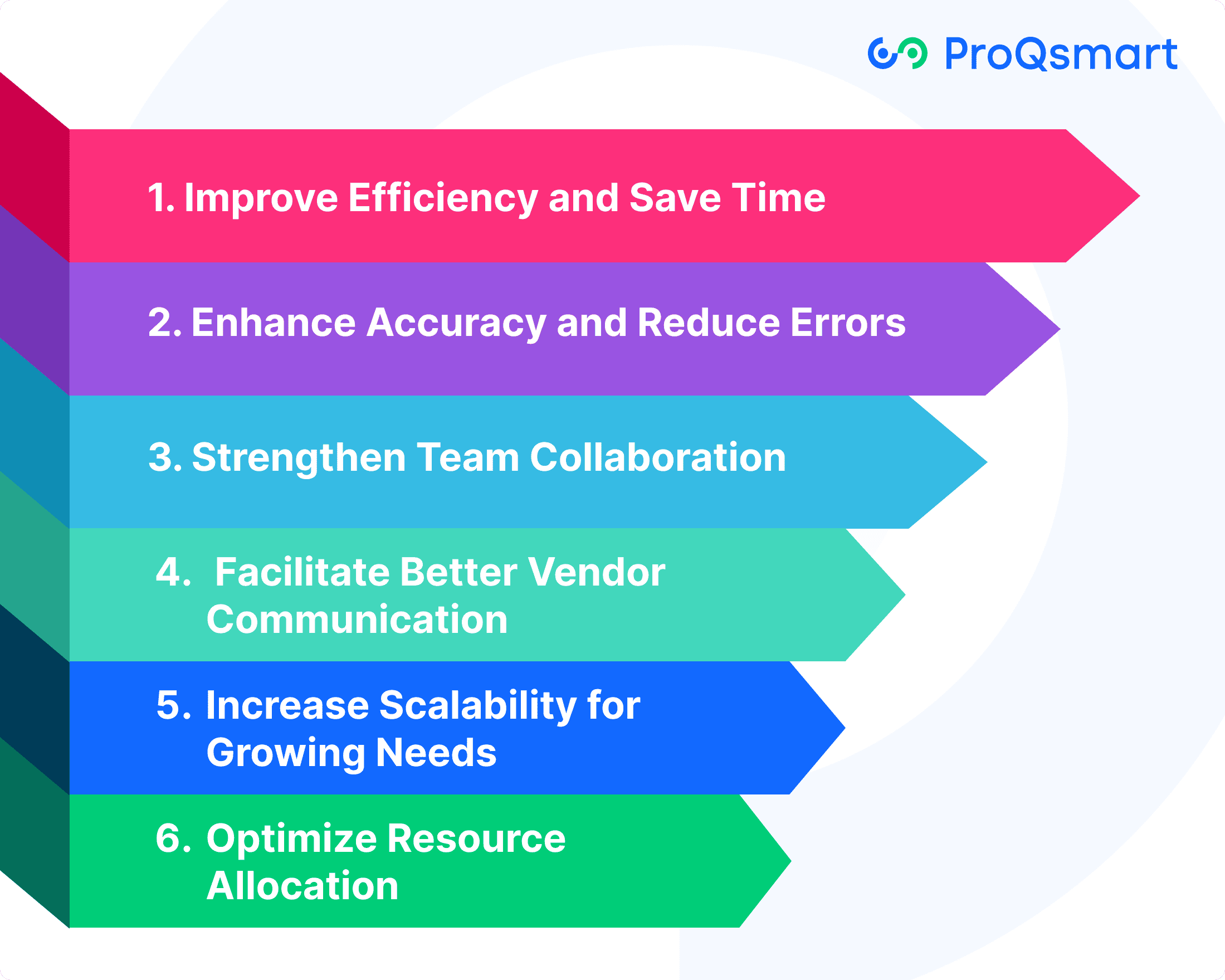RFPs are intentional in the way they are written. They ensure their organizations get the best possible competitive pricing, achieve organizational strategic goals, and mitigate risks associated with procurement decisions.
When developed with a clear definition of scope and objectives, an RFP promotes transparency and collaboration among all stakeholders. It has become a key instrument for navigating highly complex and often customized procurements—especially in fields such as construction, manufacturing, and technology.
As the complexity of hotel operations increases, so does the need for streamlined processes that can adapt to changing market demands. Leveraging technology to automate RFP processes empowers hotel operators to achieve better pricing, improve collaboration with vendors, and ultimately enhance guest experiences. By clearly defining project scopes and objectives within RFPs, hotels can foster a collaborative environment that benefits all stakeholders involved.
This article explores how automating RFP processes through advanced e-sourcing platforms can transform the way hotels manage vendor relationships, drive efficiency, and secure competitive advantages in an ever-evolving industry.
Overview of the RFP Process
The Request for Proposal (RFP) process is a structured procurement process that businesses use to solicit bids for products, services, or projects. In the hotel industry, the steps typically begin with identifying specific needs and drafting the RFP document, which includes outlining the project requirements, budget, and timeline. An effective RFP ensures that all potential bidders understand the expectations clearly.
Once the completed RFP is distributed to potential vendors, they then submit detailed proposals. Following this, the proposals undergo an evaluation process where they are reviewed and assessed against predetermined request criteria, leading to the selection of a qualified vendor. Finally, contract negotiations and formal agreements conclude the process, ensuring all parties are aligned.
Key stakeholders in the RFP process could include departments such as sales, marketing, operations, and finance. This collaboration underscores the importance of clear communication across teams to facilitate a smooth proposal process.
Many teams get tripped up by inconsistent formats, as RFPs are often still produced in Excel, Word, or PDF and emailed. The sheer number of RFP questions—from 50 to more than 1,000—does not help the cause, and the lack of standardization complicates matters further, with thresholds for issuing RFPs varying widely from as low as $5,000 to as high as $250,000.
A good RFP contains a clearly defined project scope, budget, timeline, and evaluation criteria. These elements help guarantee that all potential suppliers can submit realistic proposals, making the selection process more efficient and effective.
Traditional Challenges in RFP Management

Managing Requests for Proposals (RFPs) is one of the most important aspects of procurement. There are significant challenges that disrupt the effectiveness and speed of the process. When left unaddressed, these challenges result in significant delays, miscommunication, and ultimately the failure to achieve optimal outcomes.
Below, we dive into the traditional challenges and what they mean in greater detail.
Time-Consuming Manual Processes
Administrative manual RFP management tasks can add days or weeks to your RFP process. Scoring vendors one-by-one and through multiple email threads and spreadsheets are especially tedious tasks. This not only adds undue stress on teams already working in high-pressure environments, but threatens to prolong project timelines by weeks or more.
When buyers issue RFPs via email, wrangling those responses becomes a herculean task. This is particularly the case when managing scores of vendors. Automation tools help mitigate that effort in a major way by creating one central place for answers, automating response scoring, and making everything more efficient.
Difficulty in Managing Multiple RFPs
Handling several RFPs simultaneously introduces complexities, such as prioritizing requests and preventing oversight. Keeping track of dozens of simultaneous RFPs can result in missed deadlines or mistakes in required documentation.
Organizations can address this challenge by adopting project management software. They can establish unambiguous prioritization frameworks to help them focus their efforts, reduce risks and save time.
Lack of Standardization and Consistency
Vendors may get thrown off by inconsistent formats across RFP documents and deliverables, resulting in misaligned and unthoughtful responses. Using standardized templates goes a step further by increasing readability and creating consistency, which can help procurement teams evaluate submissions more easily.
Having templates helps make sure what’s being requested is in line with organizational goals, and saves both time and confusion.
Limited Collaboration Among Teams
Another common challenge that arises from siloed teams is the lack of coordination throughout the RFP process. This disconnect creates confusion for decision makers and slows down project delivery.
Cross-functional collaboration, further facilitated by tools such as integrated, cloud-based platforms, allows for a more fluid exchange of information, leading to improved results.
Errors and Miscommunication Issues
Poorly written requirements and disjointed communication are all too frequent catalysts for mistakes. Such as when buyers fail to distribute vendor questions in a uniform manner, leaving vendors competing in the dark.
Establishing consistent, transparent procedures and a central point of communication helps reduce confusion so that vendors can submit their best proposals.
"Don't let the complexities of RFP drafting slow you down. Download our ready-to-use RFP template and take the first step towards efficient vendor selection and project success"
Benefits of Automating the RFP Process

Automation has completely changed the game on the Request for Proposal (RFP) process for procurement teams. It supercharges efficiency, accuracy, collaboration, and scalability, powering transformational benefits. By incorporating automated tools—like ProQsmart and RFP templates—businesses can overcome many of the challenges faced and better align with their project requirements.
1. Improve Efficiency and Save Time
Automated RFP tools save valuable hours by eliminating the need to complete painstaking tasks. Repetitive tasks such as formatting proposals and compiling data sets that once took hours are now mere minutes. Teams can win 45% more proposals as a result!
This newfound time gives procurement professionals the power to redirect their focus. Now, they can focus on higher-value activities such as evaluating suppliers and developing innovative solutions. ProQsmart’s workflow automation simplifies document management and can get you through the process from start to finish without a hitch.
2. Enhance Accuracy and Reduce Errors
Automation reduces the risk of errors from manual data entry, like conflicting data or forgotten due dates. Tools that include built-in validation checks help automate the process of ensuring proposals are high-quality and adhere to compliance requirements.
This is why accurate, timely data is critical to making smart decisions, especially in highly competitive procurement environments where time and accuracy are of the essence.
3. Strengthen Team Collaboration
By allowing for real-time updates and shared access to critical documents, RFP automation fosters meaningful teamwork. E-sourcing software, such as ProQsmart, helps teams work together more effectively, providing tools like synchronized team workflows and centralized communication hubs.
This minimizes confusion and improves the quality of projects that are delivered.
4. Facilitate Better Vendor Communication
This level of transparency and clear communication with vendors is important to establishing positive relationships. Automated systems provide real-time notification, communication, and visibility, keeping your responding vendors informed every step of the way.
ProQsmart improves vendor communication and increases efficiency. ProQsmart helps you with handling e-tenders and keeps track of supplier performance.
5. Increase Scalability for Growing Needs
Automation enables scalability, helping firms reduce the burden of an ever-increasing number of RFPs while maintaining quality. With an effective RFP process guide, Smart growth ProQsmart grows with your organization, ensuring flexibility as your procurement process evolves.
6. Optimize Resource Allocation
By automating repetitive tasks such as pre-qualification and resource tracking, teams can focus more on strategic priorities within the procurement process. ProQsmart helps you maximize time and effort by placing the right team member on the right task, ensuring effective RFP management and eliminating wasted time.
Key Features of RFP Management Tools

RFP management tools have recently become an absolute necessity for organizations that want to simplify their procurement processes. Their main goal is to improve efficiency, facilitate collaboration, and help maintain compliance.
Second, they provide an all-in-one approach to handling multi-faceted RFP processes. E-sourcing platforms such as ProQsmart has critical features such as customizable templates, vendor tracking, and integration capabilities.
Customizable Templates for Flexibility
This is where customizable templates become RFP management tools’ most powerful feature to streamline RFP creation. Ready-to-use structure pre-designed templates help you save a lot of time.
It’s incredibly simple to customize them to your own unique project needs. For example, ProQsmart offers cloud storage for reusable templates, allowing teams to keep a library of commonly-used formats.
This reduces the amount of time spent on the RFP process and brings a new level of consistency between documents. Automated proposal generation leverages previously-stored content to reduce the time spent creating proposals from scratch.
This enables procurement teams to focus on higher-value, more strategic work thereafter.
Emerging Trends in RFP Automation Technology
The recent influx of automation technologies is creating a dramatic shift in the RFP process guide. Procurement professionals are increasingly leveraging advanced technology to automate workflows and enhance the evaluation process, enabling insights-driven decisions that align with specific project requirements. Below, we explore major trends that are influencing the future of effective RFPs and automation technology.
AI-Powered Insights for Better Decisions
AI is at the forefront of this transformation, helping RFP responders extract important, actionable insights. AI-powered tools can compare vendor proposals, study historical patterns to determine best-fit suppliers, and pinpoint areas of risk.
Predictive analytics, a branch of AI, predicts future vendor performance by analyzing historical data, allowing teams to choose the most trustworthy partners. For instance, AI can help automatically rank proposals according to predefined criteria, which can save time and ensure consistency.
Equipped with these capabilities, decision-makers face a process that is more data-driven, less subjective, and ultimately more successful.
Predictive Analytics for Future Planning
Predictive analytics is quickly becoming a must-have for any forward-thinking procurement strategy. Using advanced AI to analyze historical data, these tools predict shifting market trends, allowing organizations to proactively adjust to new conditions.
Predictive models, for example, can recommend the best timelines to source specific needs so resources are used when and where they’re needed most. This strategy doesn’t just reduce risks, but it also lays the groundwork for proactive planning, creating long-term efficiency across procurement cycles.
Integration with Cloud-Based Solutions
Cloud integration takes RFP automation tools to the next level with remote accessibility and collaboration features. Collaboration Cloud-based platforms enable users to access RFP data in real-time, from anywhere in the world, ensuring more timely communication among teams.
ProQsmart is a perfect example of this trend, offering complete integration, real-time tracking, and dynamic monitoring of supplier performance. Scalability guarantees these solutions adapt alongside organizational demands, often rendering them essential assets for today’s enterprises.
Enhanced User Interfaces for Accessibility
Intuitive, user-friendly interfaces are key to widespread RFP software adoption. Intuitive, user-friendly designs make it easy to navigate the system, boosting user engagement and cutting down on training time.
Accessibility features, like customizable dashboards or multilingual support, are built-in to cater to a wide range of users, promoting inclusivity. An emphasis on user experience frees up your teams to move more quickly, solving issues such as slowed SME response times by design.
"Don't let the complexities of RFP drafting slow you down. Download our ready-to-use RFP template and take the first step towards efficient vendor selection and project success"
Vendor Tracking and Management Capabilities
Monitoring vendor RFP responses is critical in keeping your RFP process organized and on track. Vendor Management Tools with vendor management capabilities, like ProQsmart, enable teams to centralize vendor data, standardized interactions, and monitor compliance all in one place.
Features such as automated email notifications keep all stakeholders up-to-date, and security questionnaires provide a more rigorous approach. This centralized management builds supplier relationships, which in turn can increase quality and compliance.
Proposal Scoring and Comparison Tools
Objective evaluation is critical when evaluating vendor proposals. Scoring tools offer a more objective method by using a weighted system of criteria that allows for impartial evaluation.
Transparent evaluation criteria, an industry-leading feature included in ProQsmart, improve confidence and mitigate bias in the final selection process. This kind of functionality enables organizations to flexibly evaluate vendors delivering the most value without sacrificing procurement objectives.
Integration with Existing Systems
The seamless integration between RFP management solutions and other tools, such as ERP or project management software, enhances workflows and removes data silos. ProQsmart further distinguishes itself by automating workflows and supporting the procurement process, while maintaining real-time data transfer to align with organizational objectives.
Real-Time Reporting and Analytics
Real-time reporting and analytics give you valuable, actionable insights into every step of the RFP process. ProQsmart’s analytics feature uncovers trends and inefficiencies, empowering teams to fine-tune their approach and maximize efficiency.
Data-driven decision-making becomes second nature when key metrics are connected and easily accessible, resulting in improved procurement outcomes and increased transparency.
Conclusion
RFP processes can seem intimidating, like you’re walking through a maze, with the right tools, proactive tactics, and a little help, the path becomes clear. Automation removes time that doesn’t add value and minimizes mistakes. It encourages teams to work towards overarching outcomes such as developing more competitive proposals and enhancing supplier relationship management. Equipped with the right tools, you can effectively manage even the most complex workflows, helping you adopt and even forecast the latest trends in procurement tech.
It’s not just about saving that time – it’s about leveraging that time saved to make more data-driven decisions, enhance collaboration, and deliver true value to your organization. It’s time to re-approach your RFP strategy and seek out solutions that are actually right for you. Don’t let inefficiencies hold you back—embrace solutions that align with your goals and elevate your procurement processes. With ProQsmart, you can transform your RFP management into a seamless experience that drives results.
Ready to take the next step? Book a demo with ProQsmart today and discover how our automated solutions can enhance your workflow






